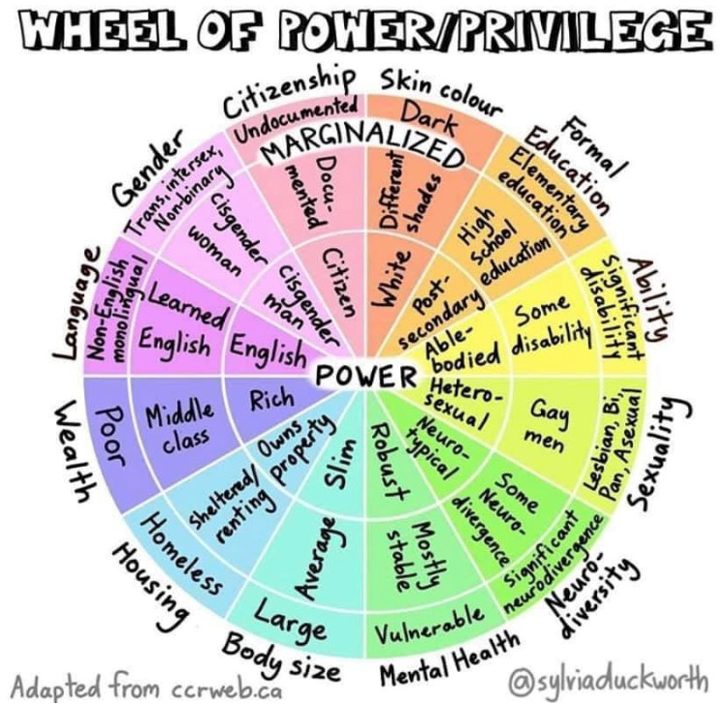21 Exploring Intersectionality in Professional Settings (3.1.2)
Verna Johnson
Understanding Intersectionality in the Workplace
Intersectionality is a term developed by civil rights advocate and law professor Kimberlé Crenshaw. It describes how different aspects of a person’s identity combine and interact to create unique experiences of advantage or disadvantage. These identities include race, gender, class, sexual orientation, age, religion, disability, and more (University of British Columbia [UBC], 2021).
What Is Intersectionality?
Intersectionality is a framework for understanding how people’s social identities overlap and shape their lived experiences. It helps explain why individuals encounter the world differently based on how their identities are interconnected. For example, a queer Black woman may face challenges not only due to her race or gender individually, but also because of how these identities intersect in daily life (UBC, 2021).
This concept highlights that identity-based discrimination doesn’t occur in isolation. Instead, race, gender, class, and other factors work together to influence people’s experiences, both positively and negatively.
Why Intersectionality Matters in the Workplace
Intersectionality is closely connected to understanding systems of oppression. Oppression refers to the unfair treatment that results from deeply rooted social norms and systems. In the workplace, this means employees may encounter multiple, overlapping barriers that affect how they are treated, how they communicate, and how they advance in their careers (UBC, 2021).
By acknowledging intersectionality, we can better:
-
Recognize and address hidden inequalities
-
Create more inclusive workplace policies
-
Support employees with diverse and intersecting identities
-
Promote fairness in hiring, communication, and collaboration
Understanding intersectionality helps build a respectful and equitable work environment where everyone can thrive.
Practicing Intersectionality at Work
To apply intersectionality in everyday work and life, we can:
-
Reflect on our own identities and privileges
-
Stay mindful of how others may experience the world differently
-
Be open to learning about issues that affect others
-
Use inclusive language and practices
-
Speak up when we notice unfair treatment (UBC, 2021)
A useful tool for this reflection is the “Wheel of Power and Privilege.” Figure 3.1: Wheel of Power/Privilege below encourages people to examine how different parts of their identity—such as race, gender, ability, or education—may afford power or create vulnerability within systems of inequality.

Intersectionality helps us go beyond a surface-level understanding of diversity. It reminds us that identity is complex and layered. In professional settings, this awareness helps us communicate with empathy, build stronger teams, and promote equity.
Video: What Is Intersectionality?
Watch Video 3.3: What is intersectionality? below to learn more about intersectionality and how it can be applied in workplace settings.
Video 3.3: What is intersectionality? | Running Time: 2:49
What is intersectionality? | Published by Peter Hopkins | Apr 22, 2018
This short video introduces the concept of intersectionality and explains how people often face multiple, overlapping forms of discrimination. While traditional approaches to equity tend to focus on one identity at a time, intersectionality encourages us to recognize how different systems of power—such as racism, sexism, ableism, or ageism—interact.
Crenshaw developed this framework to highlight how Black women, in particular, were being excluded from legal protections that focused only on either race or gender—not both together. Today, intersectional thinking helps us better understand how privilege and disadvantage operate across identities like class, sexuality, and disability.
As leaders and team members, practicing intersectionality means:
-
Listening actively to others’ experiences
-
Reflecting on your own privilege and position
-
Considering who might be excluded
-
Taking real steps to include marginalized voices
This approach strengthens efforts to build more inclusive and equitable workplaces.
Additional Resource (Optional)
If you’d like to explore related ideas—such as identity, stereotypes, implicit bias, and power—watch Video 3.4: Cultural Identity, Power, and Privilege. It covers concepts relevant to workplace diversity and communication. Note: To navigate directly to specific topics, click “Watch on YouTube” and use the chapter markers below the video.
Video 3.4: Cultural Identity, Power, and Privilege | Running Time: 39:22
Cultural Identity, Power, and Privilege | Published by Steve Klien | Sep 27, 2020
Reference
References are at the end of this chapter.

